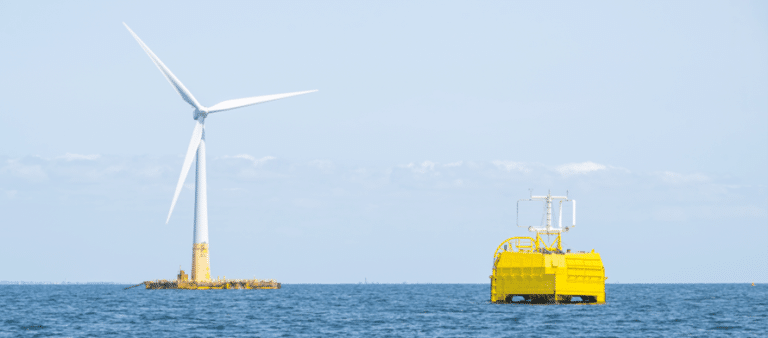Lhyfe says that its Sealhyfe offshore hydrogen production pilot has been successfully towed 20 kilometers into the Atlantic Ocean off the coast of Le Croisic, France. The French company said the platform started producing offshore hydrogen on June 20. The project will undergo real-world testing on a re-engineered floating platform connected to Central Nantes' SEM-REV offshore testing hub, which is already linked to a floating wind turbine. The compact Sealhyfe platform, measuring less than 200 square meters, has the capacity to produce up to 400 kilograms of hydrogen per day.
The Hydrogen Offshore Production for Europe (HOPE) project consortium has secured a €20 million ($21.9 million) grant from the European Commission. The consortium, including partner Lhyfe, aims to demonstrate the feasibility of large-scale offshore renewable hydrogen production and pipeline transport. The project involves constructing a 10 MW production unit off the coast of Belgium in the North Sea by 2026.
RINA and AFRY have conducted an initial study on the feasibility of a direct pipeline linking the Gulf region and Europe for low-carbon hydrogen transportation. The two sides said that the results reveal the Gulf's potential as a cost-effective source of low-carbon hydrogen for Europe. The analysis demonstrates that existing infrastructure can transport approximately 2.5 million tons of hydrogen per year, but expanding the pipeline network would further enhance transport capacity.
Australia has granted approval for a AUD 51 million ($34 million) renewable hydrogen plant in Victoria. Energy Minister Chris Bowen said that the 10MW electrolyzer will be eight times larger than the country's current largest electrolyzer. The project, located in Albury-Wodonga, will use renewable energy from a Victorian wind farm to showcase the compatibility of renewable hydrogen with existing gas infrastructure. The renewable hydrogen will be distributed through natural gas pipelines, blended at up to 10 percent. Construction is set to begin in 2023, with the site expected to be operational by late 2025.
Toyota, Toyota Tsusho, and Mitsubishi Kakoki have agreed to introduce biogas-derived hydrogen production equipment in Thailand. “The hydrogen production equipment to be introduced will be manufactured by Mitsubishi Kakoki and installed in Thailand in November 2023 to produce hydrogen from biogas derived from local chicken manure and food waste,” said Toyota. The companies will collaborate on systems for the compression, storage, and transportation of biogas and hydrogen.
Hydrogène de France (HDF) has signed two deals to accelerate the development of its hydrogen power plants in the Philippines. The initial agreements were formed with the Mindanao Development Authority and the Philippine Department of Energy, while the subsequent one was entered into with National Power Corp., the country's main utility company, said the French company.
Air Liquide has become an “official supporter” of the 2024 Olympic Games in Paris, under a partnership to contribute to reducing the event's carbon emissions. The group will supply renewable hydrogen to power some of the official fleet.
Enapter has secured an order from UK-based Intelligent Energy Ltd. (IEL) to deliver a 1 MW AEM-Multicore electrolyzer. IEL makes lightweight hydrogen fuel cell products and will use the AEM Multicore to generate hydrogen to test its zero-emission fuel cell products. Delivery is planned for 2024.
This content is protected by copyright and may not be reused. If you want to cooperate with us and would like to reuse some of our content, please contact: editors@pv-magazine.com.



By submitting this form you agree to pv magazine using your data for the purposes of publishing your comment.
Your personal data will only be disclosed or otherwise transmitted to third parties for the purposes of spam filtering or if this is necessary for technical maintenance of the website. Any other transfer to third parties will not take place unless this is justified on the basis of applicable data protection regulations or if pv magazine is legally obliged to do so.
You may revoke this consent at any time with effect for the future, in which case your personal data will be deleted immediately. Otherwise, your data will be deleted if pv magazine has processed your request or the purpose of data storage is fulfilled.
Further information on data privacy can be found in our Data Protection Policy.